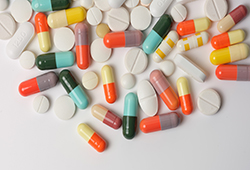The Future of Patents for Patients: USPTO Temporarily Extends Cancer Immunotherapy Pilot Program (Patents for Patients) and Requests Public Input On Next Steps

On June 29, 2022, the United States Patent & Trademark Office (USPTO) announced that it was temporarily extending its Cancer Immunotherapy Pilot Program (”Patents 4 Patients” or “P4P”) to September 30, 2022, and also issued a request for public input on the P4P.
Under the P4P, Applicants can file a petition for expedited examination of a patent application that recites a method of treating cancer using immunotherapy. Petitions to enter the P4P are free, i.e., there is no cost for expediting under this program. This most recently announced extension will allow filing of P4P through September 30, 2022 unless and until the USPTO announces any further extensions.
During the current extension period, the USPTO is also considering whether to further extend and/or modify the P4P. In support of this effort, the USPTO is seeking input from the public. The comment period is open until July 29, 2022.
Once the comment period closes, the USPTO will review and decide whether to: (1) extend the current P4P beyond September 30, 2022; and (2) if so, whether or not to make any modifications, such as by expanding its scope in one or more areas. For example, since the current P4P requires recitation of a method of treatment, one modification could be to allow entry into the P4P based on recitation of compositions of matter, including those which could be used in treating a cancer. Along similar lines, the P4P could be expanded beyond cancer to include other diseases. The official notice can be accessed at the online federal register (here) and anyone interested in commenting is able to do so here, anytime before midnight July 29, 2022.
 Canadian Patent Examination
Canadian Patent Examination The FDA’s Center for Drug Evaluation and Research (CDER) approved 50 new drugs and biological products in 2021 (not including the vaccines, cellular and gene therapy products, or other products approved in 2021 by the Center for Biologics Evaluation and Research). As in past years, small molecule drug approvals dominated the list.
The FDA’s Center for Drug Evaluation and Research (CDER) approved 50 new drugs and biological products in 2021 (not including the vaccines, cellular and gene therapy products, or other products approved in 2021 by the Center for Biologics Evaluation and Research). As in past years, small molecule drug approvals dominated the list.
 Given that artificial intelligence (AI) – historically the domain of software companies – is a new frontier for many life sciences companies, we have assembled five helpful tips to consider for protecting AI technologies:
Given that artificial intelligence (AI) – historically the domain of software companies – is a new frontier for many life sciences companies, we have assembled five helpful tips to consider for protecting AI technologies: Idenix’s Pharmaceuticals’ patent (U.S. Patent No. 7,608,597) was invalidated for having a genus that was “too broad.” The trial judge ruled that the patent did not enable a person of skill in the art to select a single compound from the “billions and billions” of compounds encompassed by the genus. On appeal, the Federal Circuit upheld the trial judge’s ruling of non-enablement. On January 19, 2021, the Supreme Court of the United States (SCOTUS) declined to review the Federal Circuit’s decision to invalidate Idenix’s patent.
Idenix’s Pharmaceuticals’ patent (U.S. Patent No. 7,608,597) was invalidated for having a genus that was “too broad.” The trial judge ruled that the patent did not enable a person of skill in the art to select a single compound from the “billions and billions” of compounds encompassed by the genus. On appeal, the Federal Circuit upheld the trial judge’s ruling of non-enablement. On January 19, 2021, the Supreme Court of the United States (SCOTUS) declined to review the Federal Circuit’s decision to invalidate Idenix’s patent. On December 27, 2020, the President signed into law the “Consolidated Appropriations Act, 2021” (the “Act”). Included within this omnibus legislation are several provisions (in Division BB, Title III, Subtitle C) that affect the regulation of generic drugs and biosimilar medicines by the U.S. Food and Drug Administration (FDA).
On December 27, 2020, the President signed into law the “Consolidated Appropriations Act, 2021” (the “Act”). Included within this omnibus legislation are several provisions (in Division BB, Title III, Subtitle C) that affect the regulation of generic drugs and biosimilar medicines by the U.S. Food and Drug Administration (FDA).